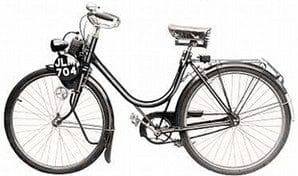
Velosolex 1946- France/Hungary
The Motor Cycle published a one-page road test on 24 July 1952 entitled ’45cc Velosolex Motorised Cycle’ with the accompanying less-than-snappy standfirst; ‘A sturdy, built-as-a-whole runabout with adequate performance and exceptional ease of control.’ ‘Perfect French minimalism’ would have succinctly suited.
After WWII the Velosolex became as much the French way of life as fine wines or croissants, with whole families often sharing one or more of the diminutive two-wheelers. Operation couldn’t be easier – light pedal starting (they even fire with a gentle shove) then sit, steer and stop. Across much of Europe – and other enlightened parts of the world – no licence, number plate or helmet is required and in truth, precious little skill. Slow they are – early models hit 17mph while later examples smoke along at 20mph-plus, but their perceived reliability is second to none.
Famed for the Solex carburettor they invented in 1910, patented and manufactured along with vehicle radiators, partners Goudard and Mennesson had long thought of building a tough, simple motorised cycle. They first hatched their plans in the trenches of WWI but waited until the late-Thirties before Paul Mennesson designed their ideal utility machine. As no suitable proprietary engine was available, Paul designed his own, initially a 38cc two-stroke with direct drive to the front wheel. The first prototype was built in 1942 with the German occupying forces in control of their Solex factory – it is claimed the occupiers didn’t notice or perhaps didn’t care.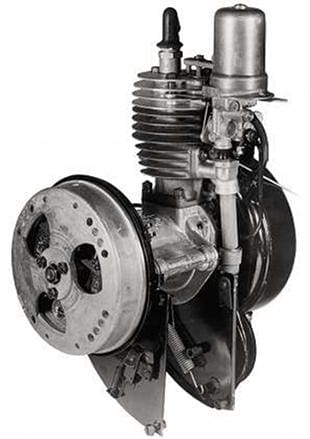
Goudard and Mennesson launched their moped in 1946, by which time its engine had grown to 45cc. Weighing 60lb, the first Velosolex with ladies’ cycle style frame and glow worm lights had minimal controls comprising two brake levers and a combined decompressor/throttle lever. There wasn’t even a fuel tap – petroil was pumped into the carburettor by a membrane pump actuated by changes in crankcase pressure. When required, the engine could be lifted clear of the front tyre.
Offered in black only, they were known by many fans as le Solex and more recently ‘old black magic’. During the Fifties production often exceeded 200,000 machines per year. In 1954 the engine grew again to 49cc and in 1959 an automatic type clutch was introduced although some basic models had no clutch. In 1964 annual sales peaked at 340,000. Competition, including from Japanese makers, encouraged Solex to introduce further models including Micron 50cc minibike (1967) and the conventionally styled Flash moped (1969) with shaft final drive. The Solex 5000 appeared in the early Seventies with an option of a folding model named the Plisoloex.
Solex sold the moped business to Motobecane c1974 and it has since passed through more hands before production was suspended and then restarted in Hungary. By 2000, over 8,000,000 Velosolexes had been sold worldwide and many – even very old models – remain in regular use. For the layman early models have round tubular frames while later examples employ square box section tube. Although the majority served as cheap urban transport, some adventurers have undertaken epic trips sur le Solex. All brilliant fun and any journey will simply take as long as it takes on Goudard and Mennesson’s dream machines.
Venus 1953-55 Germany
Maker from Donauworth who used Sachs single cylinder two-stroke engines to power a small range of under 175cc scooters. Manufacture began with the 147cc MS150 and 177cc MS 175 which was offered with the option of electric starter. In 1954 Venus tried a smaller 40mph scooter powered by a 97cc engine.
Verus (Veros) 1919-25 UK (and Italy)
Another marque manufactured by Alfred Wiseman Ltd of Glover Street, Birmingham who also built Sirrah and Weaver motorcycles. Early production comprised a range of 211 and 269cc two-stroke singles using the firm’s own Wiseman engines. During the early Twenties these were progressively phased out in favour of a range of side-valve and ohv 250 single to 1000cc V-twins with JAP or Blackburne engines.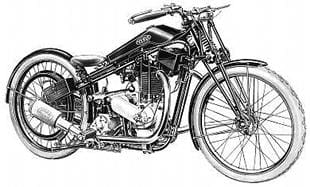
Verus motorcycles were exported to Italy during c1921-24 and sold by the racing motorcyclist Oreste Garanzini under the Veros brand. A few 211/269cc two-stroke models and four-stroke singles survive.
Viatka 1956-79 Russia
Viatka were for a time Russia’s leading scooter maker. Production began with a copy of a 150cc Vespa although Piaggio never licensed the design to the Russian firm. Later they introduced a two-stroke scooter of their own design.
Viberti 1955-68 Italy
Offered a range of under 50cc mofas, mopeds and ultra lightweight motorcycles as well as a limited range of up to 125cc machines. Usually used proprietary two-stroke engines, which were often sourced from German factories.
Victoria 1902-28 UK
Although styled like English machines and built using predominantly English proprietary parts including JAP, Villiers and Coventry-Victor engines, the Victoria was for some years by volume, Scotland’s leading motorcycle maker. Despite odd reports to the contrary there was never a business connection between The Victoria Motor and Cycle Co Ltd of Dennistoun, Glasgow and the famous German marque of the same name from Nurnberg. Production slowed to just one model powered by a 147cc Villiers engine in 1927, but four machines including two JAP engined models were offered in 1928; their final year as a motorcycle manufacturer.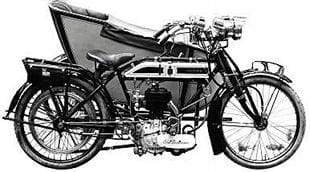
Victoria 1899 (1901)-1966 Germany
Max Frankenburger and Max Ottenstein founded their Nurnberg business to build ordinary (penny farthing) cycles in autumn 1886. For the first few years it took up to 100 workers to build fewer than 300 ordinaries which were accordingly expensive but within five years production levels were running at over 10,000 cycles per year. The firm had become Victoria Fafrradwereke AG vormals. Frankenburger & Ottenstein and became Victoria Werke AG in 1899.
It is unclear when Victoria built their first prototype motorcycles but by 1901 their interest had grown in motorcycling and machines were on offer in very limited numbers using established proprietary engines.
Over the next few years Victoria built a range of models including tricycle forecars, with their own three-wheeled chassis, using Cudell, FN, Minerva, Zedel and other engines.
During 1900-09 they also tried cars using up to four-cylinder engines of 482-2680cc bought from Aster, De Dion and Fafnir. A small number of cars, including a De Dion powered two-seater, were sold in the UK under the Eureka brand. In 1909 car production ended as the directors had decided Victoria’s future rested with large volume cycle manufacture and a smaller scale motorcycle operation. Briefly c1956-58 they built the Spatz car.
Although pre WWI motorcycle production by Victoria was on an ‘as and when’ basis after the war they, like many, realised motorcycles were a serious proposition. In 1920 they unveiled a 493cc fore and aft flat twin with a BMW side-valve engine.
Happy with their product Victoria contracted the design of an ohv version, initially made by Sedlbauer in Munich although Victoria soon took over the production. This powered the two-speed 8bhp KR2 and with further development the three-speed 12bhp KR3 in 1923. By 1926 further development led to the 62mph (100kph) KR4. Against this road motorcycle development background, Herrn Steimlein (chief designer), worked on the engine’s sporting potential, which by 1926 easily exceeded 100mph (160kph) in supercharged form.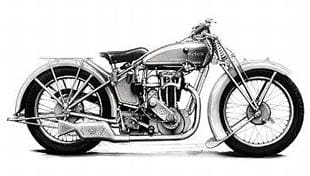
During the late vintage period and into the Thirties, Victoria recognised the sales potential of a larger range. New models included four-stroke singles with British-made Sturmey Archer engines and later an extensive range of models powered by German built Sachs two-stroke units.
However, they continued building their famous flat twins. By 1935 the factory marketed a wide selection of models from 74cc to 600cc including two-stroke 74/98cc autocycle-type models with pedals, the ‘go to work’ two-stroke 150cc 3-speed KR15, a spread of 200s including the KR20 ZB and the sporting 350cc four-stroke KR35B with Victoria’s own rather unusual take on the girder front fork design. Larger models included the 500cc 16bhp flat twin KR8 while their top of the range model was the KR6 Bergmeister.
The quality of Victoria motorcycles wasn’t lost on the German military who bought service versions of the ohv 596cc KR6 (V1) during the late Twenties and an update of this as the 20bhp 100kph ohv KR6 during the Thirties. Military models supplied to the Reichswher & Wehrmacht included the side-valve 498cc KR9 and ohv vertical single cylinder KR35 WH.
Although their factory was badly damaged during WWII they were soon back in motor bicycle production with the 38cc Vicky (Vicky 1), comprising a heavyweight ladies’ cycle- type drop frame and sturdy cycle wheels, a tiny two-stroke engine mounted alongside the rear wheel with chain final drive. Later, with its engine mounted more conventionally, the moped became the Vicky11 and its derivatives.
Usually using their own engines, Victoria progressively introduced a range of motorcycles, some of which demonstrated their advanced thinking and all were of top quality. Models included three-speed 125cc Bi-Fox (1951), 250cc single cylinder KR25HM (1953) and the Aero range which began in 1950 and notably included the 245cc single cylinder two-stroke Aero KR26N Sport.
Their post WWII landmark model, the four-stroke transverse V-twin 345cc shaft final drive Bergmeister, was unveiled in 1956. By German standards a medium weight model and Victoria’s largest post WWII motorcycle, it was a favourite for many discerning solo riders as well as sidecarists.
Designed by Norbert Riedel in 1948, Victoria introduced their advanced, almost futuristic, two-stroke 197cc four-speed KR21 Swing in 1955. The engine/gearbox unit with push button gear change was rigidly coupled to the rear wheel with central springing controlling the rear suspension, in effect as the rear wheel moved upwards the cylinder barrel scribed a downwards curve and vice versa. During the mid-Fifties, Victoria and the Italian maker Parilla entered an agreement whereby Victoria used engines and they also borrowed the design of a scooter. With its 198cc horizontal engine and push button gearchange, it was named the Peggy and attracted much interest at the Frankfurt motorcycle show. Although marketed 1955-57 there was a break in production due to Victoria’s worsening financial situation. Other products of the arrangement with Parilla included a 175cc motorcycle.
After the launch of the Peggy and Swing, Victoria began to concentrate more on the moped market and cycle production. In 1958 Victoria joined with DKW and Express to form the Zweirad Union, who concentrated predominantly on the 50cc market, offering mopeds including some expensive luxurious models. Fichtel and Sachs AG acquired Hercules in the early Sixties and the Zweirad Union in 1966. The DKW and Hercules badges were retained for motorcycle and moped production while Express and Victoria were used on cycles. In less than 80 years, Victoria’s fortunes had scribed a full circle.
Villa 1968- Italy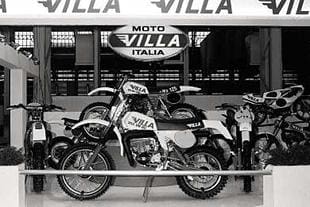
Brothers Francesco and Walter Villa were international road racing stars but Francesco was also an accomplished engineer. Having further honed his motorcycle development skills with FB Mondial and Montesa, Francesco established a small motorcycle manufacturing facility at Monteveglio. Production began with a 30bhp 125cc disc-valve two-stroke single cylinder road racer. The 118mph (190kph) machine was soon a hit with clubmen and selected national runners.
Rapidly, Francesco introduced a range of 50-250cc single cylinder two-stroke moto-cross and trials machines. Then in quick succession followed further road racers in a range of capacities including the 50, 175 and 250cc classes. Unlike the off-road models with piston port engines, all racers had disc valve control and were aimed at the Italian Formula events.
These were followed by a narrow angle two-stroke V-twin for GP events and a 250/4 two-stroke which was soon sidelined by ongoing FIM legislation. Ridden by Walter and Francesco Villa, Chas Mortimer, Giuseppe Mandolini and others, Villa amassed many places in the 1969 and 1970 125cc GP class and 1969 250cc class ridden by Walter Villa who won a hat-trick of 250 crowns (1974-6) riding for Harley-Davidson.
Villa dropped first out of GP racing and later slipped into the background in national events to concentrate on their motocross, trials and enduro models. They also built limited numbers of road-going models including the 125cc Daytona and Italia as well as some trail models, including the 350cc Rommel and 125cc Scrambler.
Villiers 1912 (1898)-(1969) UK
Despised by some but loved by many, Villiers engines powered endless different motorcycle brands from the four corners of the world. They have been used in every form of motorcycle sport imaginable including trials, scrambling, racing, sprinting, grass track and sand racing. Over the years they have been produced under licence in a number of countries including France and Spain and after UK production ended, the Villiers brand continued in Madras, India. During 1960 their lifetime production exceeded 2.5 million units and even after motorcycle engine production ended, manufacture of industrial engines continued.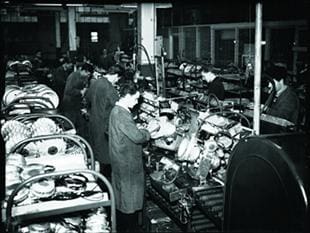
Other than a few demonstrator models built by Midlands motorcycle makers on behalf of Villiers to demonstrate new engine models to prospective trade customers, the company never built or sold complete motorcycles. Sensibly, they never wanted to compete for sales with the trade customers who bought their engines in such large quantities. Villiers did more than any other engine maker to further the cause of motorcycling worldwide by powering so many marques into life.
The Villiers Cycle Components Company was established in July 1898 by John Marston of the Wolverhampton cycle makers Sunbeam, to make and market selected cycle components. Thus, they could manufacture and sell pedals, free-wheels and other cycle parts to rival companies without a conflict of interests caused by their manufacture of Sunbeam cycles.
While still working for the Palmer Tyre Co, Frank Farrer designed a neat 349cc inlet over side exhaust valve engine unit with two-speed gear. Farrer joined the Villiers board in 1912, an appointment helped by his engine design. But Frank Farrer was a crafty lad who knew a simpler unit would make an ideal economic proprietary engine for Villiers to make and sell. His concept was the 269cc two-stroke unit displayed at the 1913 Olympia Show.
The Villiers board, with a typical board like decision, having little faith in the two-stroke design, offered both the 349cc four-stroke and 269cc unit at the show and conveniently Sun displayed a machine with the Villiers four-stroke unit while Ixion had a 269cc engine in one of their machines. To claim the 269cc two-stroke engine was a runaway success is an understatement.
A full model by model history is beyond this insertion but details of a selection of the common models and families may be helpful for those considering Villiers powered machines for the first time. All are single cylinder unless otherwise stated.
49.9cc 3K Moped (1959-c1966 – moped); 98cc Junior, JDL, (1934-39, 1939-48 – autocycle); 98cc Midget (1931-40); 99cc 2F (1949-58 – autocycle); 99cc 1F, 4F, 6F (1949-53, 1953-58, 1956-64 – two speed motorcycle); 122cc 11⁄4hp (1926-27); 122cc 8D, 9D, 10D, 11D, 12D, 13D (1936-38, 1938-48, 1949-53, 1953-54, 1953-54, 1953-54); 147cc 6C, 7C, 8C, 29C, 30C (1922-23, 1923-24, 1924-47, 1954-56, 1954-59); 148cc 12C, 15C, 31C (1932-40, 1934-40, 1956-64); 172cc Sports, Sports-autolube, TT Brooklands, TT Super-Sports (1924-32, 1924-32, 1925-34, 1926-32); 174cc 2L, 3L (1957-62, 1960-66); 196cc 1E, 2E Super Sports, 2E (1928-38, 1929-40, 1930-40); 197cc 3E, 5E, 6E, 7E, 8E, 9E, 10E (1939-40, 1946-8, 1949-53, 1953-56, 1953-58, 1955-67, 1957-59; 224cc 1H (1954-7); 246cc 2H, 31A, 32A, 33A, 34A, 35A, 36A, 37A (1957-60, 1958-65, 1960-66, 1958-59, 1960-62, 1962, 1962-64, 1965-68); 247cc 6A. 7A, 8A, 9A, 10A, 16A (1922-23, 1924-25, 1925-26 – autolube, 1926-29 – autolube, 1930-32 – autolube, 1934-40; 247cc Starmaker (68 x 68mm, 1963-69); 249cc 14A, 17A 18A (1933-40 – options of autolube or petroil and/or water cooling, 1935-38, 1939-40); 249cc twin 2T, 4T (1956-68, 1963-67); 324cc twin 3T (1957-64); 343cc 6B, 7B, 8B, 9B, 9BA, 10B (1922-23, 1924-25, 1925-26 – autolube, 1926-29 – autolube, 1929-32, 1928-32); 344cc twin 350 twin (1927-28); 346cc 14B, 14B, 17B (1931-40 – autolube, 1931-40, 1932-40 – water cooled).
Notes:
* Selected engines, especially early units, are marked with Roman numeral in catalogues etc rather than digits as above.
* Capacity ranges include different types including sporting or competition examples.
* In selected instances of later engines sold with gearboxes, ratios were changed and options of three or four gears were available.
Villof 1951-61 Spain
Maker of lightweight motorcycles for the home market who fitted Hispano-Villiers two-stroke engines and also used their own 75-125cc single cylinder two-stroke units. Odd examples escape Spain on the autojumble route providing an alternative for lightweight fans.


